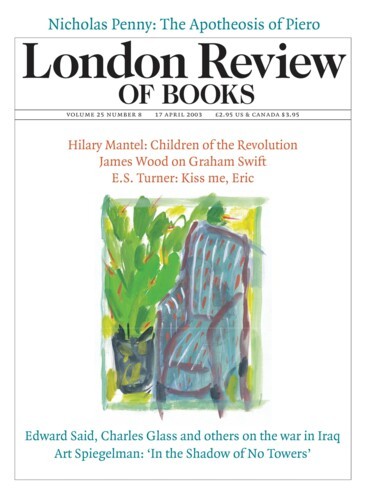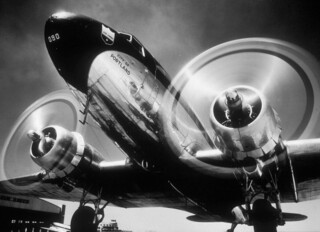Afilm clip from the mid-1920s of Josephine Baker dancing, looking as pleased as any extrovert four-year-old to be showing what she can do with her feather skirt and pretty body, is the happiest thing in the V&A Art Deco exhibition. She jokes with you. She has fun.
Other good things in the exhibition suggest, as her act does, that the right style can make good times better – whether on a streamlined train, an ocean liner or in a glitzy nightclub. Travel posters by Cassandre and McKnight Kauffer, the coloured floor plan of the Café Aubette in Strasbourg by Theo van Doesburg, the mirror and glass entrance of the Strand Palace Hotel, Gordon Miller Buehrig’s Auburn 851 ‘Boat Tail’ Speedster (two tons of open-top motoring glamour) – all give an aesthetic dimension to the business of getting from A to B or having a night out. The zippy decoration the furniture-makers and fabric designers boosted from late Cubism; the spicing of conventional nymph-faun-and-grove decorations with fashion-plate chic; the Greek, Mayan and Egyptian designs adapted for the salon or drawing-room: none of these was to be taken more seriously than Josephine Baker’s vaudeville Africanism. The serious thing was the power of commerce to make you happy. The commerce in pleasure which the Art Deco style promoted promised to gild your good times. The style could announce modernity in the cheapest plastic box or the most lavish interior. Stripping the surface style off avant-garde, ancient and ethnic art offered design opportunists a quick route to a new look.
It would be absurd to look for a deep structure which relates the things here to each other; the fat book-of-the-show uses Wittgenstein’s notion of family resemblance to suggest the nature of the overlapping similarities which make it possible to identify a common Art Deco style.* The works considered – nearly all produced between the wars – are disparate in size and value, ranging from William van Alen’s Chrysler building to Sonia Delaunay’s illustrations to Blaise Cendrars. Some are luxurious, like Eileen Gray’s lacquer and silver-leaf ‘pirogue’ daybed, and some practical, like John R. Morgan’s Waterwitch outboard motor. The details which make it possible to put these, not to mention any number of smart frocks, showy cigarette cases, smoothly engraved glass vases and bits of geometric architectural decoration, under the one heading are not evidence of deep cultural tides. They show, rather, how a new fashion effortlessly spreads and transmutes, like the odd twists and vortices a drop of ink makes in a glass of water. A single element – the prismatic shards borrowed from Cubism, for example – can pop up anywhere. Here, a Czech cabinet, a Danish-American coffee service and the model for Raymond Duchamp-Villon’s ‘Maison Cubiste’ prove it.
There are paintings. Tamara de Lempicka’s Jeune fille en vert (c.1927) starts the show. The woman’s strongly moulded features and bright lipstick make her sister to the actresses in the spot-lit portraits that film studios issued in the 1930s. The engineered curves of her sleek dress could have been formed in the workshops turning out carapaces which gave anything, from a car to a steam engine, the same full curves, and her flounces are no less streamlined than the shapes which give speedy looks to static things – from buildings to cigarette lighters. The shapes in Fernand Léger’s Les Disques dans la ville (1920) suggest wheels, bridge trusses and pistons – things that characterise old industrial engineering. But Léger’s work belongs to the Modernism that sought timeless authority and saw in such details the basis of an aesthetic that would be part of a more general transformation, part of a new world with new ways of working and living. Art Deco, however defined, never aspired to be more than a new look, a fashionable mode of decoration. This frivolity was, as the book explains, picked up by critics at the time. More than anything else it is moral purpose that separates the Modernists from the decorators. Exported to America as the International Style, Modernism too became a design alternative (with some advantages when it came to building skyscrapers cheaply) but in Europe it went on having a social dimension and for many decades was the style of, among other things, public housing.
In old histories of modern architecture the contrast between the pavilions of the French designers of luxury goods whose work dominated the 1925 Paris Exposition des Arts Décoratifs and Le Corbusier’s ‘Esprit Nouveau’ pavilion was allowed to exemplify the move from decoration to pure form, and was read as an early sign of the triumph of rational design which would follow. Art Deco reproduces two of Osbert Lancaster’s illustrations of 1939 from Homes Sweet Homes, ‘Functionalist interior’ and ‘Modernistic interior’, and says of them that ‘in this context both the Moderne and the Modernistic are viewed as vulgar and pretentious.’ (Moderne: Art Deco; Modernistic: Modernism.) This is not really true. Lancaster is funny about both, as he is about other styles ancient and modern. Because Modernism and Art Deco were so nearly contemporary, his dissection of them might have made those who cherished their Aalto furniture and those who loved their Lalique vases feel uneasy when they realised that what seemed the right style – or beyond style altogether – labelled them as clearly as an aspidistra did their grandparents. Vulgarity, on the other hand, is something the reader adds to Lancaster’s dispassionate account. Today the work of the French designers of luxury goods in 1925 seems less like kitsch than it did. Half a century of critical rehabilitation has had its effect, and you no longer find masterpieces of moulded bakelite on junk stalls.
The pavilions run up for the 1925 exhibition (none of them permanent – they are reckoned to have stimulated some interesting innovations in imitative plaster work) included a house for a collector and one for an ambassador. The Alexandre III bridge was lined with boutiques and the Eiffel Tower decorated with lights by Citröen. Illustrations of these set pieces, however, are not as appealing as those of single objects. It was a few years later that the decorated building made a last brave stand, Art Deco’s Egyptian colonnades and Moderne sunbursts sparkling brashly among dimmer stripped-classical and early modern façades. In essays on the style’s world-wide manifestations, Art Deco shows that examples to match the Hoover building in England and the hotels of Miami can be found in almost any city where those who were building new also wanted to build smart.
Serious scholarship applied to ephemeral things can be ponderous, but there is every reason to be grateful that so much has been gathered together here, including obscure and forgotten things – and so much explained.
Send Letters To:
The Editor
London Review of Books,
28 Little Russell Street
London, WC1A 2HN
letters@lrb.co.uk
Please include name, address, and a telephone number.


